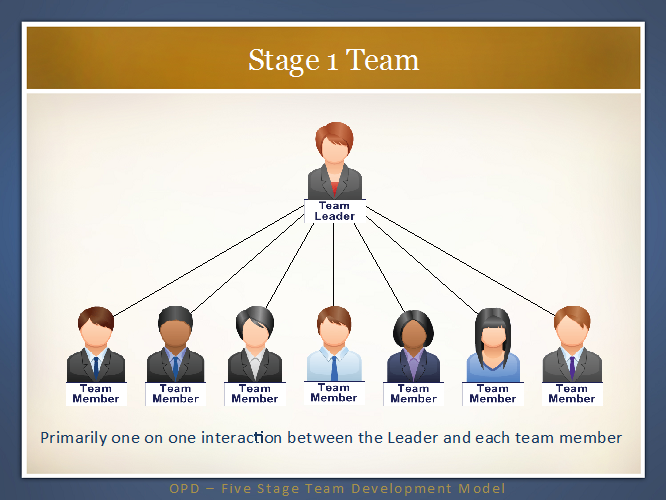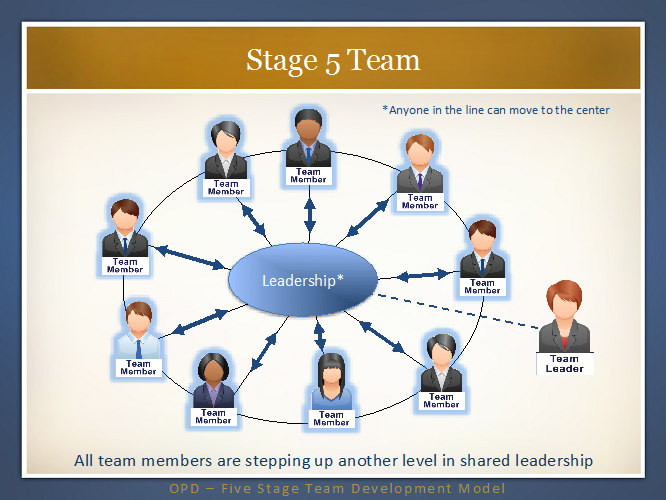Low Productivity? Redesign Your Team So Everyone Is the Leader
Top-down structures hurt morale and creativity.
It is generally accepted that higher morale leads to better productivity. And with all of the pressure on the federal government to improve performance, it makes sense to identify new ways to not just improve morale, but also employee productivity.
Government managers have two basic options in trying to make a difference: Better manage within the existing work design, or change the design.
According to the 2014 Federal Employee Viewpoint Survey, the vast majority of employees do not believe that:
- In their work unit, steps are taken to deal with a poor performer who cannot or will not improve.
- Pay raises depend on how well employees perform their jobs.
- In their work unit, differences in performance are recognized in a meaningful way.
The underlying reason for the low ratings on the survey relates to something respondents’ supervisors did or did not do. The approach most organizations take to address such issues is to try to do a better job of training their supervisors. Yet year after year, the federal government has taken this approach only to see scores continue to decline.
Perhaps more than supervisory training is needed. Maybe it is time to take a different, more progressive approach.
Why the Current Design Doesn’t Work
Almost all government organizations use a traditional top-down approach to management, meaning each entity has a supervisor who manages a designated group of employees. The design is referred to as a Stage 1 Team in the book A Team of Leaders, which I co-authored with Paul Gustavson. The flaw with this work structure is its linear nature.

The supervisor’s perspective: He/she is under an enormous amount of pressure for the team to perform. Frequent demands are made by superiors, and he/she must also handle common issues such as problem employees and union requirements, while making all of the key decisions for the team. It is no wonder supervisors often feel that the weight of the world rests on their shoulders.
The employees’ point of view: Employees believe they, too, face stringent performance demands. Moreover, they often feel like Charlie Chaplin in Modern Times, trying to do their part along the government “assembly line” while doing what they are told with little autonomy, authority or room to grow and be creative. Employee morale is often a function of less-than-effective supervisors who are frustrated by the very same structure.
A Team of Leaders
Fortunately, there is a better way forward that involves a different design and a far more effective and liberating work structure—one in which everyone has the training and the skills required to be a leader within their team. Under this approach, the supervisor ultimately becomes a coach who serves as an adviser to the team, thus freeing up his/her skills for higher-level activities, such as strategic planning and benchmarking. The team is taught and empowered to handle the planning, performance management and accountability requirements, as well as deal with poor performers.

Under this framework, everyone is involved in all aspects of the team’s management, which leads to team members who are more engaged, involved, and motivated.
By implementing this design, many of the problems and complaints outlined in the FEVS could be eliminated, dramatically improving organizational operations. Be aware however, that it is not an easy thing to do because it requires time, energy and support, as well as significant redesign and training, and commitment from higher-ups.
Many organizations in a variety of sectors have already adopted this approach and are flourishing. Perhaps it is time for to consider changing your approach as well.
Stewart Liff is a fellow with The Performance Institute, specializing in human resources management, visual performance management and team development. He is the author of multiple books, including Managing Government Employees and A Team of Leaders. Contact him at Stewart.Liff@Performanceinstitute.org.
(Image via Toncsi/Shutterstock.com)



